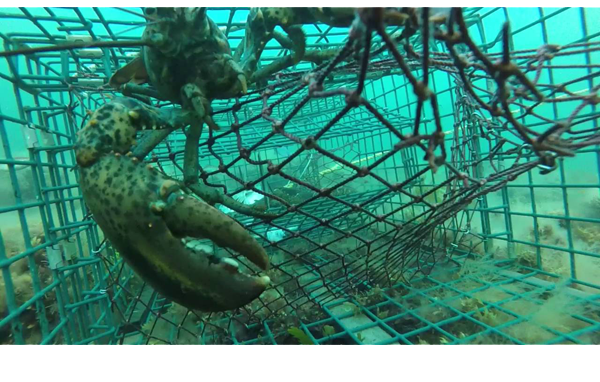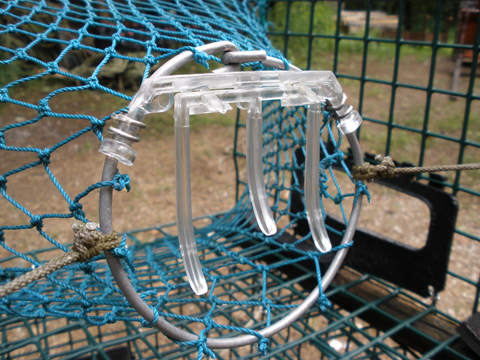Keeping lobsters in the trap
Because if they get back out, what's the point?

An Often Overlooked Fact About Traps
Although a lobster trap may successfully attract lobsters to the bait, lobsters can later escape, even out of the parlor. Notice on hakejaw or sharkmouth parlor heads, the top twine near the mouth is often chafed. This is caused by the sharp underside of the lobster's tail. Lobsters crawl backward towards the mouth and put their tail in the mouth and slide out upside-down.

An Effective Solution
On a trap with a hoop in the parlor head, lobsters can enter very easily. However, they can also get out very easily. The Hoop Gate allows the lobster to enter the parlor very easily but will not allow the lobster to escape back out. It is basically a one-way door.
The Hoop Gate allows a lobsterman to fish more efficiently by allowing for longer sets and improved flexibility in hauling schedules. This is especially important in times of high fuel and bait costs. Variables such as breakdowns, being weathered in, and bait going off become less of a concern when using the Hoop Gate since the lobsters cannot escape from the trap over time. Large lobsters tend to rule over smaller lobsters in the parlor, and are often the first to find a way out.
If your trap catches the lobsters, the Hoop Gate will hold them.